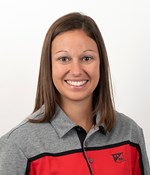Product and Agronomy Research (PAR) Results: Corn Fungicide Timing
BY Dairyland Seed Agronomy Team
CORN FUNGICIDE TIMING
Description:
With the onset of polycyclic diseases such as tar spot, fungicide application timing has become a topic of discussion. Structured fungicide applications have become common practice in management strategies. Common timings for foliar fungicides are V5, VT (tassel), and R3 (brown silk). This trial looks at these single applications as well as these applications in combination with one another.
Wabash, IN
DS-4510Q™, DS-4878AM™, DS-5095AM™ and DS-5279Q™ were planted on May 22 at 34,000 seeds per acre in 30-inch rows.
St. Johns, MI
DS-3601AM™ and DS-4510Q™ were planted on May 17 at 32,000 seeds per acre in 30-inch rows.
Treatments:
- Untreated
- Aproach® (6 oz/A) at V5
- Aproach® (6 oz/A) at V5 + Aproach® Prima (6.8 oz/A) at VT
- Aproach® Prima (6.8 oz/A) at VT
- Aproach® Prima (6.8 oz/A) at VT + Aproach® Prima (6.8 oz/A) at Brown Silk
- Aproach® Prima (6.8 oz/A) at Brown Silk
- Aproach® (6 oz/A) at V5 + Aproach® Prima (6.8 oz/A) at VT + Aproach® Prima (6.8 oz/A) at Brown Silk (St. Johns only)
Results:
Wabash and St. Johns combined
|
Treatment |
Average of Yield |
Estimate of Yield |
Yield Difference |
|
Brown Silk |
249.78133 |
186.32 |
A |
|
Untreated |
243.67464 |
179.5 |
B |
|
V5 |
249.82067 |
185.64 |
A |
|
V5 & VT |
246.94275 |
182.76 |
AB |
|
V5 & VT & Brown Silk (St. Johns only) |
185.05 |
173.11 |
C |
|
VT |
251.25711 |
187.08 |
A |
|
VT & Brown Silk |
242.59318 |
178.41 |
B |
Wabash
|
Treatment |
Avg of Yield |
Est of Yield (LSD (0.10)=3.90) |
Yield Diff |
Avg of Moisture |
Est Moisture (LSD (0.10)=1.05) |
Moisture Diff |
Avg TW |
Est of TW (LSD (0.10)=0.25) |
Test Weight Diff |
|
Untreated |
252.96 |
253.86 |
B |
23.75 |
22.16 |
B |
55.3 |
54.66 |
C |
|
V5 |
258.18 |
259.08 |
A |
23.77 |
22.18 |
B |
55.5 |
54.87 |
BC |
|
V5 & VT |
257.34 |
258.25 |
A |
23.7 |
22.11 |
B |
55.5 |
54.84 |
BC |
|
VT |
259.91 |
260.82 |
A |
23.49 |
21.9 |
AB |
55.7 |
55.01 |
AB |
|
VT & Brown Silk |
251.15 |
252.05 |
B |
23.38 |
21.79 |
AB |
55.8 |
55.17 |
A |
|
Brown Silk |
256.61 |
258.19 |
A |
23.34 |
20.9 |
A |
55.6 |
55 |
AB |
Wabash Variety Results:
|
Variety |
Treatment |
Average Yield of 3 Reps |
|
DS-4510Q™ |
Untreated |
257.6 |
|
V5 |
257.5 |
|
|
V5 & VT |
259.6 |
|
|
VT |
258.8 |
|
|
VT & Brown Silk |
253.4 |
|
|
Brown Silk |
265.3 |
|
|
DS-4878AM™ |
Untreated |
253.2 |
|
V5 |
264.2 |
|
|
V5 & VT |
256.9 |
|
|
VT |
267.3 |
|
|
VT & Brown Silk |
253.5 |
|
|
Brown Silk |
256.5 |
|
|
DS-5095AM™ |
Untreated |
259.2 |
|
V5 |
257.7 |
|
|
V5 & VT |
260.4 |
|
|
VT |
255.7 |
|
|
VT & Brown Silk |
252.2 |
|
|
Brown Silk |
255.8 |
|
|
DS-5279Q™ |
Untreated |
241.8 |
|
V5 |
253.0 |
|
|
V5 & VT |
252.5 |
|
|
VT |
257.9 |
|
|
VT & Brown Silk |
245.1 |
|
|
Brown Silk |
248.9 |
Conclusion:
Treatments at the Wabash location in 2022 were the same as at St. Johns, minus the “full meal deal” application of a V5+VT+Brown silk fungicide application. In anticipation of a tar spot infection like 2021 we hoped to learn more about fungicide timing and the suppression of tar spot as well as other foliar diseases. However, both locations saw very little disease pressure through the year. Moderate temperatures and precipitation around R4, R5 were conducive conditions for a light infection of tar spot across all treatments, but the infection did not progress. This is likely due to higher temperatures up to black layer. There were no visible differences in any of the treatments through the growing season, the entire study range remained healthy all season. When we analyze the yield results from this study, we see that the V5, V5+VT, VT, and brown silk applications were all statistically the same regarding yield, and raw data showing a 1.74 bushel increase in yield over the V5 application. In low disease environments, a single application makes the most economic sense, with best timing landing at the VT growth stage. This application timing is the most recommended by fungicide manufactures. Table 2 shows the average yields of the 3 replications for each hybrid and treatment. We see the best yield for 3 out of the 4 hybrids occurring with a VT application. As with any pesticide use, blanket applications and overuse can lead to the development of resistance. Proper integrated pest management and the use of multiple modes of actions are recommended for long term fungicide use to negate potential resistance.
 |
 |
 |
 |
 |
| Brian Weller Western Region 507.456.3034 |
Dan Ritter Central Region 219.863.0583 |
Branden Furseth Northern Region 608.513.4265 |
Mark Gibson Eastern Region 260.330.8968 |
Amanda Goffnett Eastern Region 989.400.3793 |
